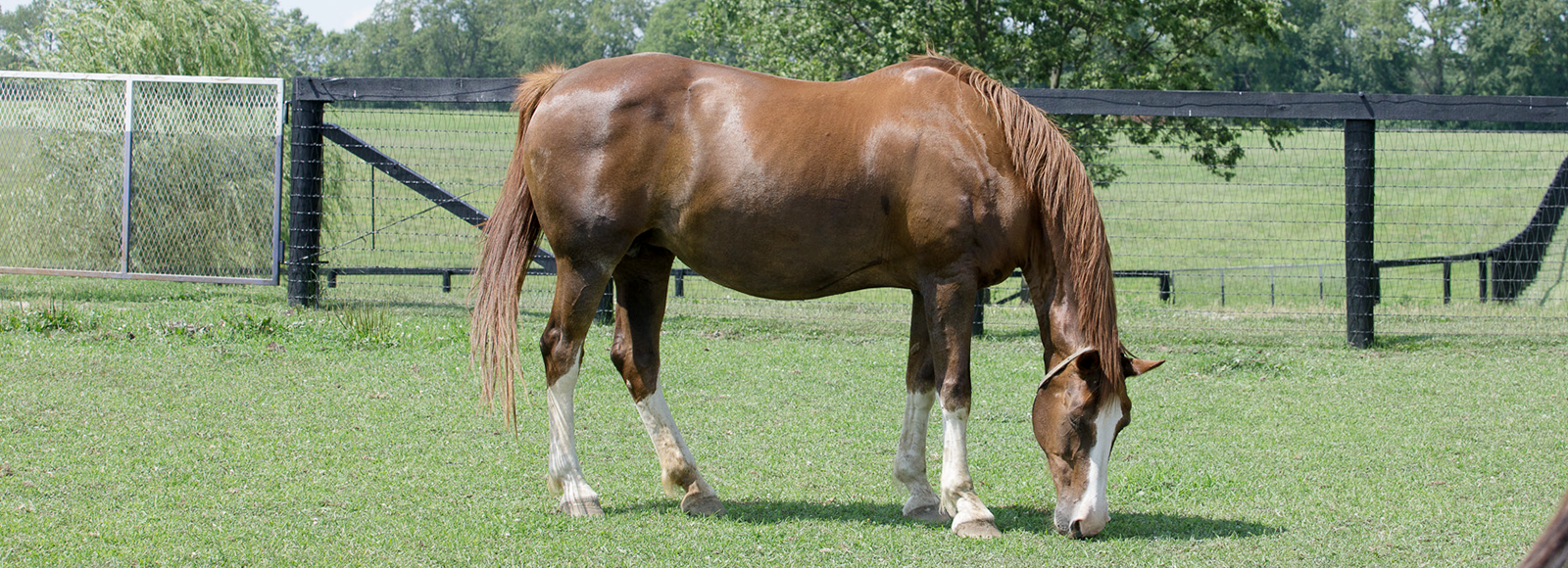
Equine Health Library
Broodmare
Health Conditions & Concerns
Gastrointestinal | Respiratory | Musculoskeletal | Endocrine
Gastrointestinal
Gastrointestinal
Postpartum mares are especially at risk for impactions of the large colon and/or cecum, rupture of the cecum with secondary peritonitis, large colon displacement or torsion, rectal prolapse, vascular damage to the small colon, and uterine tear with prolapse of the intestines through the tear.
Monitor your mare’s appetite, manure production and general attitude closely during the first couple of weeks after foaling. Controlled exercise after foaling helps prevent colic as well as provides a laxative effect. Be careful to make all diet changes gradually during this period.
At the first sign of colic (pawing, biting at sides, rolling, decreased manure passage), call your veterinarian for an examination.
Respiratory
Respiratory
The more common infectious upper respiratory diseases include equine influenza (EIV), equine herpesvirus (EHV) and strangles. Broodmares are at risk when exposed to new environments and horses through the course of breeding, particularly if the mare is being shipped to and from a breeding farm.
EHV-1 is particularly problematic for broodmares because not only can it cause respiratory disease, but it can also cause abortion. For more information on EHV-1 click here.
For more information on common infectious respiratory diseases, visit our section on pleasure horse respiratory health.
Musculoskeletal
Musculoskeletal
Conditions that cause severe distention of the body wall – such as hydrops, presence of twins, or trauma – may result in rupture of the prepubic tendon or abdominal hernia.
Clinical signs of rupture of the prepubic tendon/abdominal hernia
- Development of an expanding plaque of warm, painful ventral edema originating just in front of the udder
- The mare is often depressed and colicky
- Acute progression of either condition can result in severe distress including a rapid respiratory rate, elevated heart rate, internal hemorrhage, shock and death
The mare should be stabilized with fluids and diuretics as needed to reduce some of the edema. Delivery is often induced to ensure an assisted delivery and to minimize straining on the part of the mare. Complications include death of the mare due to internal hemorrhage and/or bowel damage, evisceration and colic after delivery associated with bowel trauma and intra-abdominal adhesions.
Repair of the prepubic tendon is not possible and re-breeding is not recommended, although affected mares may be candidates for embryo transfer.
Endocrine
Endocrine
The endocrine changes a mare goes through during pregnancy may increase her risk for developing laminitis and other metabolic concerns, including insulin resistance. When you consider the association between obesity, insulin resistance, and laminitis, this becomes a health concern beyond just delivering a healthy foal.
For these reasons, it is extremely important to manage weight and endocrine issues prior to pregnancy.
